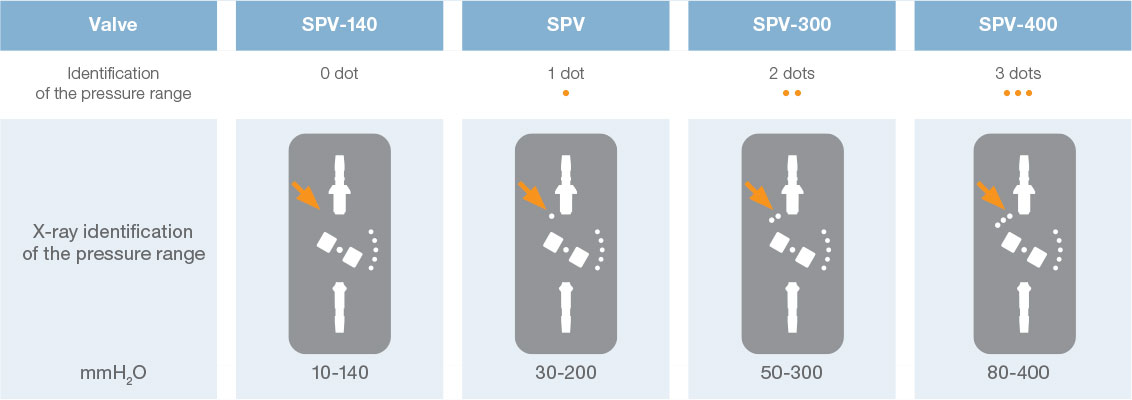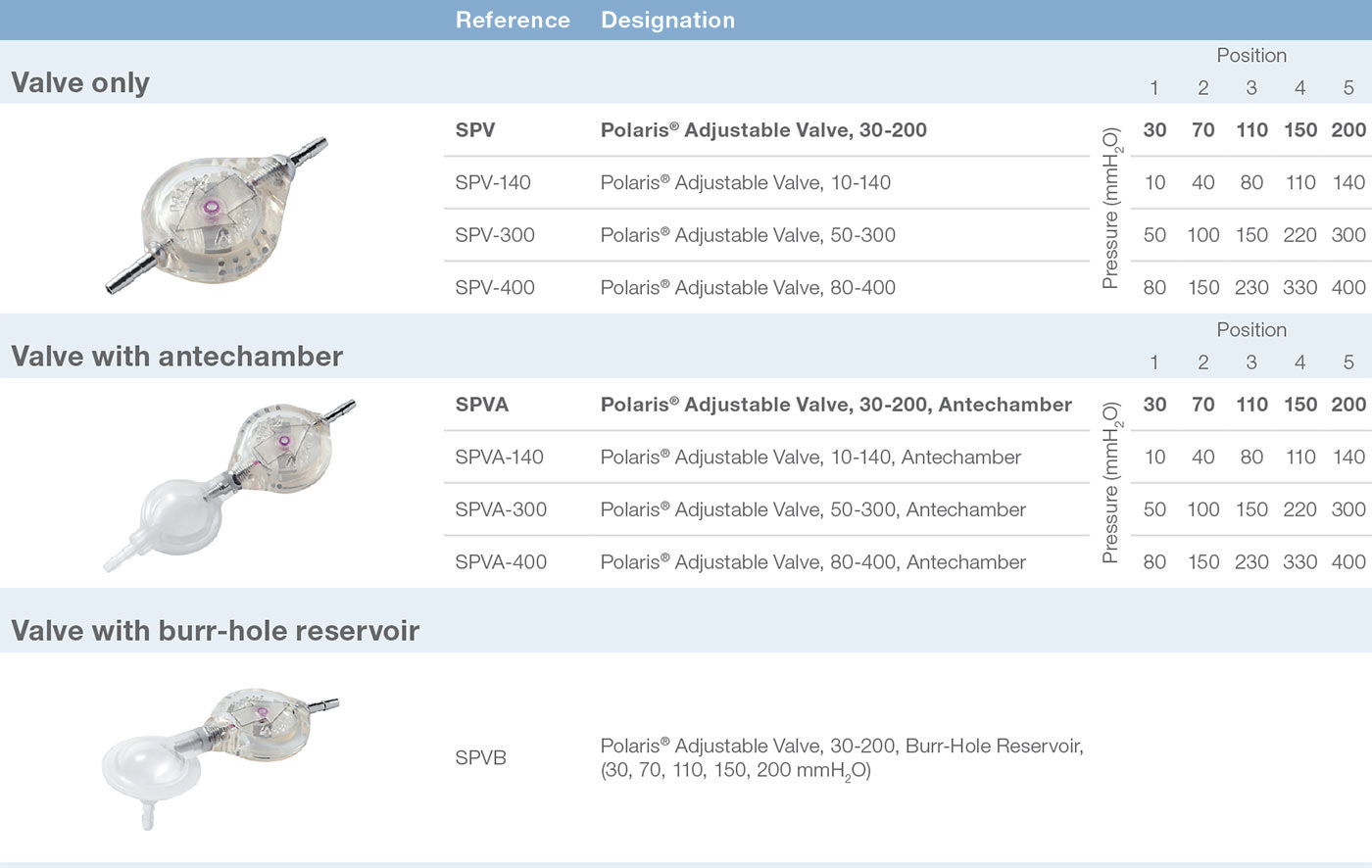The safety of adjustable valves has become a major concern for neurosurgeons because of the growing use of electromagnetic devices in daily life and the development of high power MRI (3 teslas).
Indeed, these devices are liable to modify the selected pressure accidentally, with the risk of disrupting CSF drainage and causing serious complications for the patient.
The Polaris® valve is a major breakthrough for the safety of patients fitted with adjustable valves.
Its exclusive locking mechanism enables it to resist:
- Direct knocks to the valve;
- Everyday magnetic fields;
- Magnetic Resonance Imaging (MRI), up to 3 teslas.
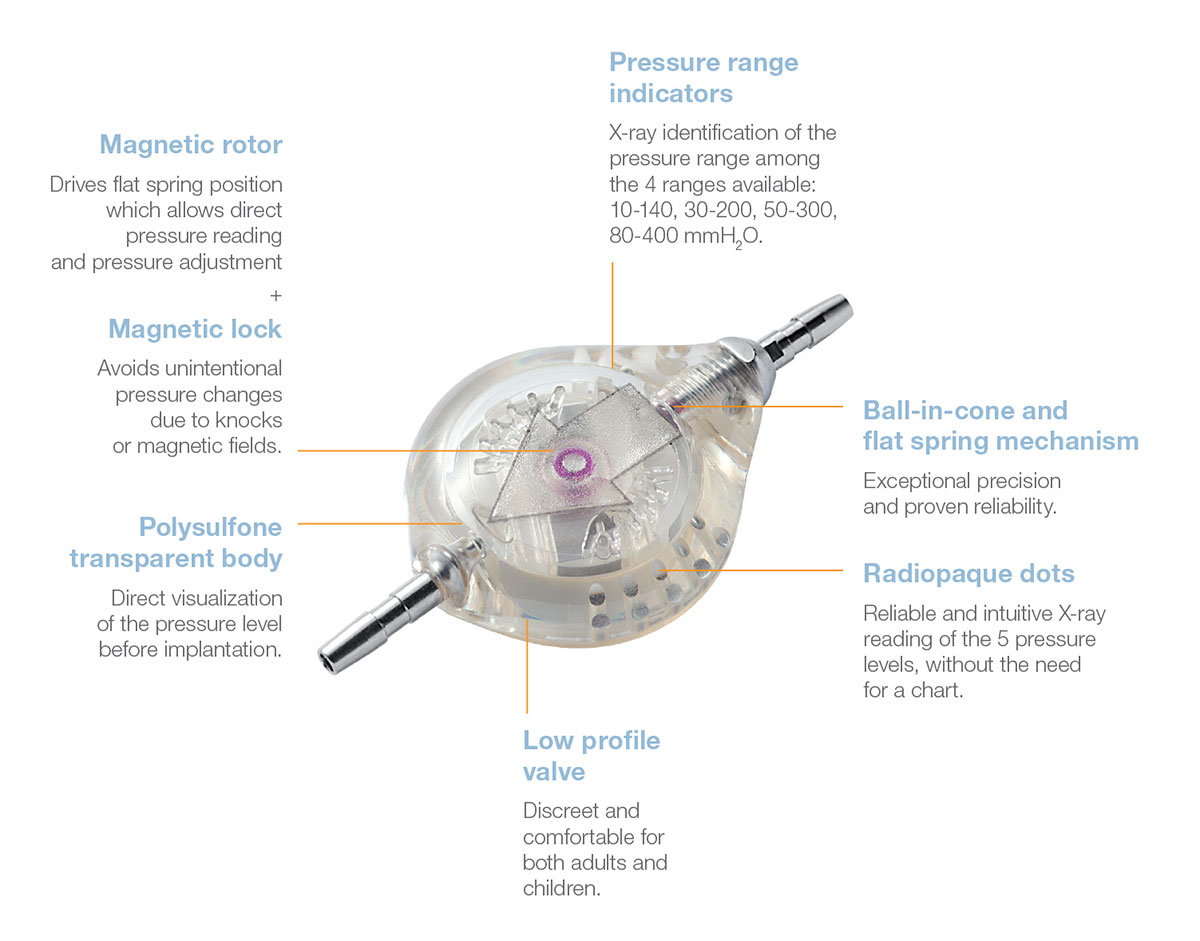
The adjustable Polaris® valve is a major breakthrough for the safety of patients thanks to the patented self-locking system of the rotor.
This magnetic lock has been designed to resist unintentional operating pressure changes due to knocks or exposure to magnetic fields, especially during MRI examinations.
It offers the patient an unequalled security against the clinical risks associated with those dysadjustments.
The Polaris® Magnetic Lock
The Polaris® Magnetic Lock is based on the permanent reciprocal attraction of two mobile micro-magnets of opposite polarity.
This “magnetic lock" holds the rotor in the selected position, thus preventing any accidental change in operating pressure if the valve is exposed
to magnetic fields.
In fact, in the presence of a standard magnetic field (unidirectional) the two micro-magnets are attracted in the same direction.
So only one of the two magnets moves in the direction of the field, while the other remains locked.
Changing the operating pressure of the valve first requires the simultaneous unlocking of the two micro-magnets in the valve by a specific magnetic key. The rotor can then turn freely on its central axis.
Normal position
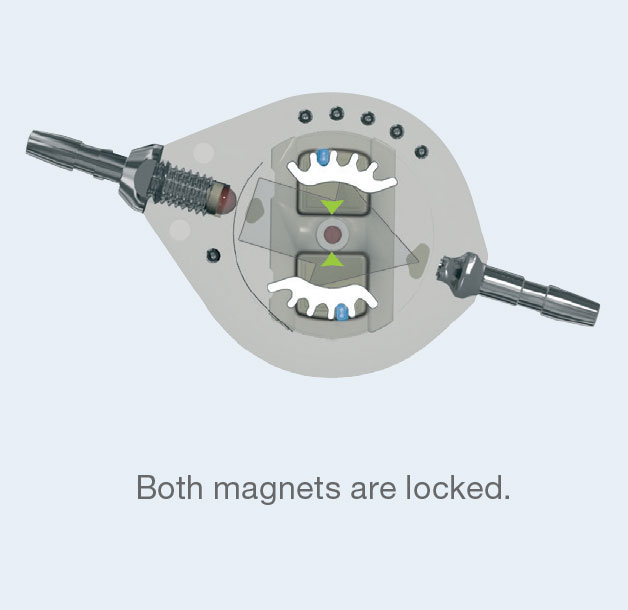
Security position
Valve subjected to a knock or to a magnetic field
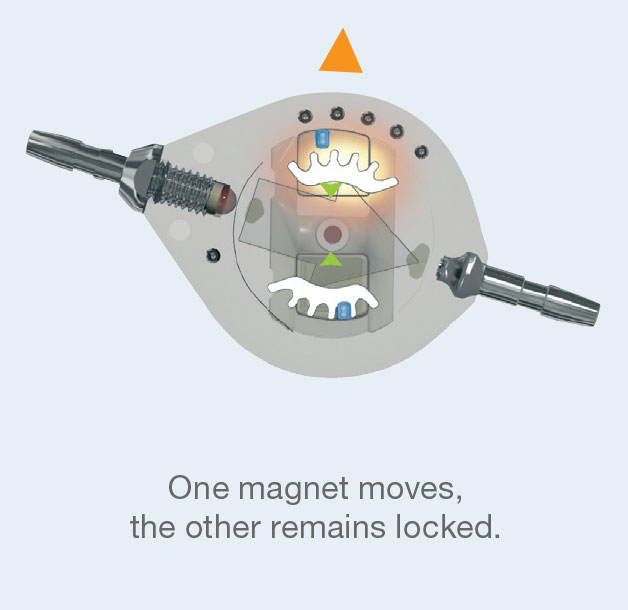
Adjustment position
with specific magnetic key

Direct pressure reading is obtained using the Adjustment Kit Compass: the Compass needle is aligned with the position of the magnetic rotor.

In addition to the standard model (30-200 mmH 2O), Polaris® also offers a unique special pressure range :
one low pressure valve and two high pressure valves. Thus a choice is provided, depending on the experience of the practitioner, to meet very specific clinical needs.
